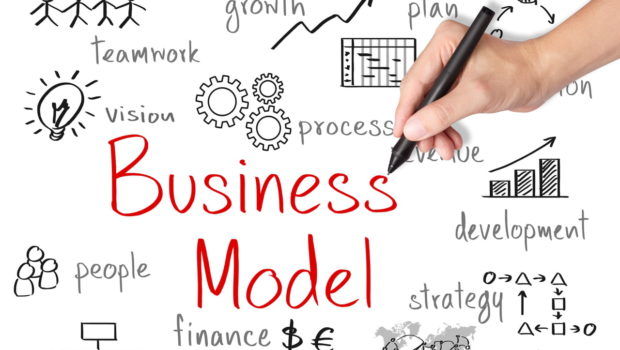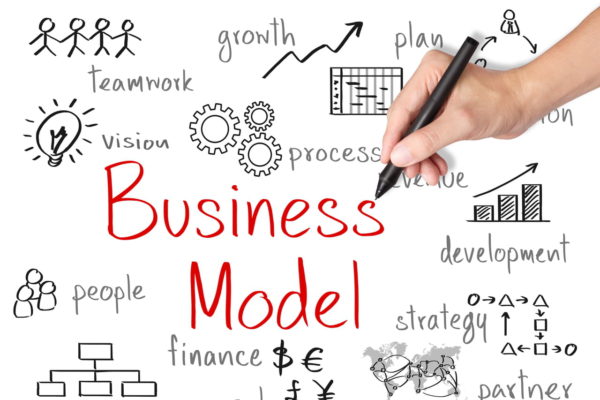What is a business model and how to design it?
Do you have an idea? Now it’s time for you to turn it into a monetization model that allows you to set up a profitable company. What is a business model? How can you design it? I am going to review the definition of the concept for you, and then we will see several illustrative examples. It will not be an exhaustive list, first because there are many, and second because there is still room to innovate and invent new paths. Maybe the next one is your creation. Do you dare to be disruptive?
What is the business model?
It is a term that is already quite old, coined by Peter Drucker in 1954, but it has returned strongly with the rise of new technologies and the Internet because in many cases it is understood as a more flexible tool than the business plan for the strategic planning.
In this way, the concept is defined in the reference book “Generation of business models” by Alexander Osterwalder and Yves Pigneur, a great team effort agreed with many experts in the field:
There are other definitions that are worth studying. For Amit and Zott:
Business model makes explicit the content, structure, and governance of transactions designed to create value by exploiting business opportunities.
While for Winter and Sulanzki the business model is:
A complex set of interdependent routines that are discovered, adjusted, and nuanced through action.
As both the concept of value and the element of adaptability seem important to me, in my opinion, a more accurate definition of the concept would be the fusion of the phrase of Osterwalder and Pigneur with that of Winter and Sulanzki. Hence my answer to the question: What is business model? Would be the following:
A business model describes the bases on which a company creates, provides, and captures value through a complex set of interdependent routines that are discovered, adjusted, and nuanced through action.
How to design business model
The Business Model Canvas format (tool from Osterwalder’s book) is very fashionable because it organizes in a very visual way the main elements of a business project. For designing effective model Business Model Canvas example can help greatly and is highly recommended. In this case, there are 9 sections:
|
|
|
|
|
|
|
|
|
What should your business model include
However, basically the format is not the most important thing. The important thing is that one way or another you answer the most important questions.
Read More about business models, LLP’s and other company trivia at MoneyBrighter
What are you going to sell and with what added value?
All business models are articulated around the idea of adding value to the customer. If you want to start a business, it is clear that you are not going to earn money for anything. You have to respond to a customer need and provide a response minimally differentiated from what the competition proposes today. You can contribute value in many ways: simplifying things for your client, reducing their costs, giving them an image, eliminating a problem or risk, etc.
Who are you going to sell it to?
A successful business has to define very well the target customer segment (which can be several if you offer different value propositions). Although your goal is ultimately to reach a mass market, you will have to start in some segment, the one that may have the most interest to buy your product or service, either because they are the most innovative customers or those who most expected a response to the problem you are going to solve.
How do you reach the customer?
You will have to define your communication, distribution, and sales policy. Online or offline approaches, personalized or automated services, advertising, and marketing policy, etc. Many entrepreneurs believe that because their concept responds to a market need they will be very successful. However, it is essential that you get the message to the customer and that your way of distributing the product or service suits them. Both are not so simple.
Monetization models
How do you turn the value proposition into hard cash? Are you going to sell the customer only once or will you try to create recurring income with a loyalty system? You can sell or rent, you can design a subscription system, you can even make third parties finance the service that you offer for free to your users (advertising). The monetization of your business is a very important element. In particular, you should make sure to create recurring revenue streams with your potential buyers rather than making individual sales to different customers. The cost of acquiring a client is much higher than what you think, so you have every interest to get the most out of the long-term relationship you establish with those who trust you.
How are you going to organize yourself?
What are the resources you will need? What will be the most important processes in your company to create value? And since you can’t do it all by yourself, who will be your key partners to achieve it? It is all very well to design a value proposition, but often the requirements to develop the product or service are much more complex than you might imagine. Pay special care to this part.
How will you react to the changes?
Any business project is pure theory until it faces the market. That is why you have to anticipate the ways of adaptation that you may have in the face of what you are going to find. It is not about having a forecast of everything that may happen (it is impossible to know and you would waste a lot of time trying to find out), but about defining flexibility factors to adapt to what you are going to find. You can re
Is all that profitable?
Once you have defined how you organize yourself (resources, partners, processes), you will have a good idea of what it costs to produce your value proposition. If you compare that with the income you can expect from the design of your monetization model, you should have an idea of whether or not your business model is viable. Actually, for viability, you should make a business plan, but it doesn’t hurt to already have an approximate vision.
Examples of business models
Historically we have known many business models, and there are still many more to discover. They tend to rely heavily on innovation and technological improvements, as advances always bring new ways to solve existing problems and make life easier for customers. I propose some examples from different eras.
Henry Ford and the Ford T
He was probably one of the most important businessmen of the last century. Henry Ford started a car production chain system that reduced costs and allowed the middle classes to buy a car. At this time, there was no customization, because what people wanted was to be able to buy a vehicle. That’s why one of Ford’s best-known phrases is “a customer can have his car the color he wants, as long as he wants it to be black.”
The bait and the hook
In Anglo-Saxon countries it is better known as the “razor and blades” model because one of the best examples is what the Gillette brand did and continues to do. The concept is to offer a very cheap product (sometimes free) so that the customer then pays for the spare parts . Printer manufacturers use it a lot too – often an original ink cartridge costs about the same as the printer. This model is now suffering with the rise of the model of the white brands of compatible cartridges.
Franchise model
For a business, a quick way to expand is with a franchise model. Although a large part of the profits must be shared with the franchisee network, in return the business can be extended without risking own capital. The members of the network benefit from a brand image, standardized processes and economies of scale (through purchasing centers, for example).
Freemium model
The word is a neologism resulting from the fusion between the words Free (free) and Premium. It defines the businesses that offer part of their products and services for free, in exchange for charging for additional services or improvements. It is a very common model in online games, software, blogs and online services in general. The idea is to offer a good but limited service for free so that customers can try it and those who most need a complete service decide to buy. Although it may seem a bit similar, it is different from a bait and hook model because the customer is not obliged to buy to continue enjoying the service. It has a free service and you can opt for a paid one.
A Freemium model is usually supplemented with an advertising model (to help cover the cost of free services), although it is not required.








![SEO: Why Your Business Needs it NOW? [Infographic]](https://technofaq.org/wp-content/uploads/2017/03/SEO-Why-Your-Business-Needs-it-NOW-01-1-150x150.png)




